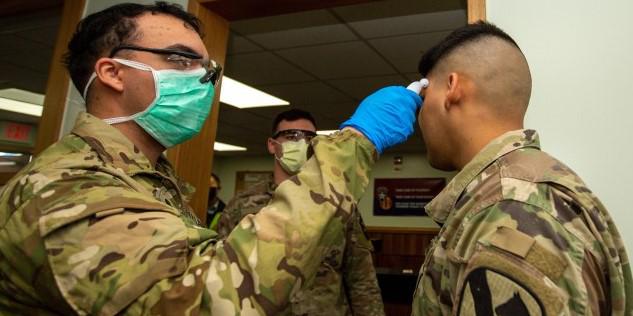LTG Crawford: COVID-19 Likely Affects Army's Future
The U.S. Army will likely see permanent, technology-enabled changes to tactics, techniques and procedures following the COVID-19 pandemic, says Lt. Gen. Bruce Crawford, the service’s retiring chief information officer and G-6.
In a keynote address on the first day of the virtual Army Signal Conference, hosted by AFCEA, the general noted that the terrorist attacks on September 11, 2001, led to a host of changes to tactics, techniques and procedures (TTPs), as well as legislation and “ways of doing business.” Many of those changes remain in place.
“We literally, the next day, we were doing business differently. The week after that and the week after that and the week after that, those TTPs we adopted right after 9/11 were enduring,” he said.
LTG Bruce Crawford, @ArmyCIOG6, says post-COVID, Army will do some new things and will do some old things differently. Virtual training and education is prime example.#AFCEA
— George Seffers (@gseffers) July 14, 2020
Gen. Crawford distinguished between the phrase, the “new normal,” which has been commonly used since the pandemic hit, and his preferred phrase “the new now,” which indicates that things are still changing and have not yet become normal. “Think about the changes that have occurred just over the last 90 days, just over the last two weeks, just over the last four weeks. It’s almost like every couple of weeks there’s a new variable in the equation, from civil unrest to multiple other variables in the equation that have caused us to not be able to just settle.”
The number one lesson learned from the pandemic so far, he offered, is that the Army may be able to accelerate some ideas that officials had on the “conveyor belt.” He cited virtual training as a prime example. The pre-COVID approach to training was to bring the soldier to training. Now, the idea is to bring the training to the soldier. “The Army’s got about 5,000 classrooms that have been enabled and have not missed a beat, 16 different locations around the country, 33 different schools, everything from the Cyber Center of Excellence to the Intelligence Center of Excellence, the Fires Center of Excellence to the Aviation Centers of Excellence—all of those literally overnight were able to … mentally transition to this new environment, almost overnight to leverage the network.”
Army training and education efforts have carried on in large part because of technology. Gen. Crawford cited a 400 percent increase in network availability, including virtual private networks. He also mentioned Microsoft Teams software, which is now has about 400,000 active Army users. “I’d say in the next 90 days we’re going to be well over 500,000 users if we stay at that pace of about 1500 a day, the adoption rate that we’re seeing across the Army,” he added.
The Microsoft 365 software, he indicated, is being adopted in three “sprints.” “We’re on a path with a series of three sprints. The first sprint now is building out the actual tenant environment. We’re on sprint number one that goes now through September.”
The military, like most other organizations, also has seen a dramatic increase in teleworking, which could have future implications. “We went almost overnight—literally overnight—in the Pentagon probably from about 1 or 2 percent teleworking to about 90 percent teleworking,” Gen. Crawford stated.
LTG Bruce Crawford, @ArmyCIOG6 says Army went from 1 or 2 percent teleworking to almost 90 percent when #COVID hit. Went from defending the network perimeter to defending the living room.#AFCEA
— George Seffers (@gseffers) July 14, 2020
He credited Army Cyber Command, U.S. Cyber Command, the National Security Agency, the Defense Department CIO, the Defense Information Systems Agency and elements of his own office working together. Army Cyber Command, he said, “literally moved from defending the traditional defensive perimeters of our 280 posts, camps and stations and our data and our networks to defending the living room because that’s where people reside,” and he noted that “this expanded cyber attack surface was a huge and monumental task that we took on as a part of this new now.”
The pandemic also has increased demand for mobile devices with access to the Secret Internet Protocol Network, commonly known as SIPRNET, or simply SIPR. “The Army’s got about 75,000 SIPR users that are out there. What we saw is that there’s probably a 400 or 500 percent increase in the number of SIPR devices that we had to spin out almost overnight. People needed a mobile SIPR device because they were content generators. They weren’t just reading emails on SIPR,” he explained.
Even the Army medical community has been affected with about 50 percent of patient interactions now being done virtually, he said, questioning whether that would have been accepted or possible at the first of the year.





Comments